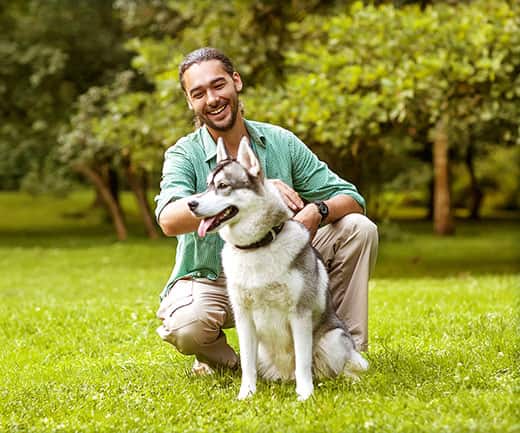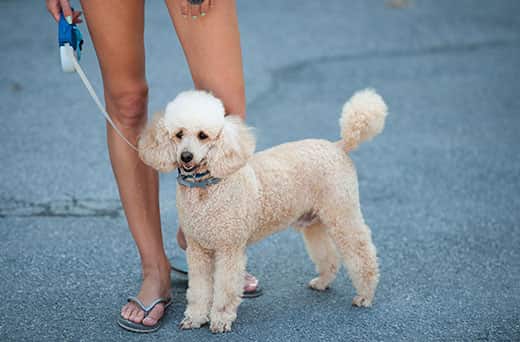
-
Find the right food for your petTake this quiz to see which food may be the best for your furry friend.Find the right food for your petTake this quiz to see which food may be the best for your furry friend.Featured products
 Adult Chicken & Barley Recipe Dog Food
Adult Chicken & Barley Recipe Dog FoodSupports lean muscle and beautiful coat for adult dogs
Shop Now Hill's Science Diet Adult Chicken & Beef Entrée Dog Food
Hill's Science Diet Adult Chicken & Beef Entrée Dog FoodChicken & Beef Entrée in a delicious loaf with complete & balanced nutrition to help keep adult dogs active and healthy
Shop Now Adult Large Breed Chicken & Barley Recipe Dog Food
Adult Large Breed Chicken & Barley Recipe Dog FoodSupports healthy joints, lean muscle, and beautiful coat for large breed dogs
Shop NowFeatured products Adult Turkey & Liver Entrée Cat Food
Adult Turkey & Liver Entrée Cat FoodPrecisely balanced nutrition with the delicious taste of minced turkey & liver to help fuel the energy needs of cats during the prime of their life
Shop Now Adult Tender No Corn, Wheat, Soy Chicken & Vegetables Stew Cat FoodShop Now
Adult Tender No Corn, Wheat, Soy Chicken & Vegetables Stew Cat FoodShop Now Senior Vitality Adult 7+ Tuna & Vegetables Stew
Senior Vitality Adult 7+ Tuna & Vegetables StewImproves Everyday Ability to Get Up & Go
Shop Now -
Dog
- Dog Tips & Articles
-
Health Category
- Weight
- Food & Environmental Sensitivities
- Urinary
- Digestive
- Joint
- Kidney
-
Life Stage
- Puppy Nutrition
- Adult Nutrition
- Senior Nutrition
Cat- Cat Tips & Articles
-
Health Category
- Weight
- Skin & Food Sensitivities
- Urinary
- Digestive
- Kidney
-
Life Stage
- Kitten Nutrition
- Adult Nutrition
Featured articles What Is Littermate Syndrome? Pet Adoption Guide
What Is Littermate Syndrome? Pet Adoption GuideLearn more about littermate syndrome in dogs and cats and how to successfully navigate adoption and early socialization processes.
Read More How to Properly Mix Wet & Dry Pet Foods
How to Properly Mix Wet & Dry Pet FoodsAn Orange cat eating from a bowl filled with mixed food
Read More The Science Behind Our Love for Pets
The Science Behind Our Love for PetsLearn the scientific reasons why we have such strong connections with our pets, and what science says about the love between humans and our furry friends.
Read More -


There are so many dogs that shed, so you might believe a hairy house is an absolute if you want to adopt a canine companion. That's far from the truth! Don't hesitate to bring a dog into your family simply because you're worried about hair loss. There are many non-shedding (low-shedding) dogs to adopt and strategies you can employ if your dog sheds a lot in your home.
Why Dogs Shed
To understand why shedding occurs, it's important to learn the role hair plays for a dog. First, the hair's most important function is keeping your dog's skin, his most vital organ, protected from elements, such as the sun, heat, cold, and more. Hair also keeps your dog's body temperature regulated. Some dogs that shed have thick undercoats that act as insulation to keep your pet both warm and cool, just as insulation keeps your home warm and cool year-round.
Like humans, a dog's hair grows all the time. As the hair stops growing at the end of its natural life cycle, it breaks off. The amount of shedding can vary based on breed, season, or health. Some dogs are heavier shedders than others. Have you ever noticed stands of hair on your pillow or caught in the drain? While your dog's hair might not make it into your shower, it will end up everywhere else from your carpet to your clothes if you don't take proper precautions.
Also, a common misconception is that shedding depends on your dog's coat length, but that is not true. Shedding varies between breeds more than hair length. While a haircut of a long-haired dog will ultimately result in less shedding for a time, it doesn't mean he doesn't shed, it just may result in less volume of hair to clean up after.
Changes in Shedding
It's important to know what is baseline shedding for your furry friend, so you'll notice any changes in hair loss. Pay attention to how much your dog sheds as soon as you welcome him into your home. Do you notice stray hairs here and there, or do you find that every time you sit down, your pants get covered in fur? Once you know what is normal for your pet, you'll be better able to identify when there is a sudden hair loss change. An easy indicator to spot is thinning of your dog's coat which could result from excessive chewing or scratching resulting from some sort of skin condition or parasite.
Seasonal shifts play a significant role in dog shedding. Dogs usually shed once or twice a year, but that doesn't mean you won't notice fur around your house year-round, as it breaks off when the life cycle ends. Major seasonal changes happen when your dog releases much of his coat, and this usually occurs in double-coated breeds with undercoats, such as Siberian huskies.
Stress is another factor that contributes to hair loss. An anxious dog may lose more than a care-free dog. Identify any stressors in your dog's environment, remove them, and see if that slows hair loss. Shedding is serious when it includes other symptoms, such as skin lesions or itching.
There are many health reasons why your dog's shedding cycle may suddenly change. According to PetMD, "an infestation of parasites, like fleas, lice or mites, can cause excessive hair loss. Ringworm, dermatitis and certain types of fungal infections, immune diseases and cancers can cause hair loss, too. Hormonal changes and allergies are another cause of shedding. Certain foods, medications, household cleaners and grooming supplies may trigger allergic reactions in dogs."
Contact your pet's vet immediately if you notice a significant change in his hair loss.


Tasty Tips
Slow the Shedding Process
Shedding is important for dogs so that new, healthy hair can grow. However, if your dog leaves much of his hair behind on your belongings, there are steps you can take to slow the shedding. Grooming your dog in your home will help remove hair before it can find its way into every nook and cranny. Brushing removes loose hair on your own terms. It's good for the hair, coat and the skin. Plus, like cats, many dogs enjoy being brushed. Grooming your dog is a bonding experience too. If possible, brush your dog daily. If not, make it a priority a few times a week. There are also de-shedding tools that can help remove the excess hair a little bit easier so you don't have to vacuum every hour.
In addition to brushing, make an appointment to see a professional groomer. While bathing at home is fine, skin conditions can occur when a dog is not rinsed or dried properly. Professional groomers have experience with dogs of all sizes, and they have the proper tools and cleansers to match your pet's needs. Certain shampoos are good for your dog's skin and coat, which can make them healthier and result in less shedding.
Nutrition Plays an Important Role
Nutrition is another big factor in your dog's overall health as well as his skin and coat health. Feeding a balanced nutrition can help keep his coat shiny and skin healthier, which can result in less shedding.
How to Keep Your House Clean
Stop stressing about whether to invite friends over to watch the game or host the next holiday party – do it!
There are many options for cleaning up any dog hair in your home. To protect couches, chairs, and beds, throw blankets can catch stray hairs. The ultimate tool to remove shedding is a vacuum that works on wood, tiles, and carpet. Use any attachments to clean cushions, or any dust-and-hair collecting areas of your home. For wood or tiled flooring, a regular or dusting broom will pick up unwanted hair. Use a wet paper towel to help pick up the loose hair. Lint rollers work well to remove hair from clothing and curtains. Also, good air filters in the home will help trap hair particles that get into the air. This not only helps keep your house cleaner, but it can also be a great benefit to anyone with dog allergies that might enter your home.
10 Most Common Dogs That Shed

According to VetStreet, here are the ten most common shedders. These fur balls have lots of hair and leave it behind wherever they go.
- Saint Bernard
- Great Pyrenees
- Akita
- Chow Chow
- Siberian Husky
- Golden Retriever
- German Shepherd
- Labrador Retriever
- Alaskan Malamute
- Alaskan Husky
10 Non Shedding Dogs (Well, Really, Dogs That Just Shed Less!)
There's no such thing a completely non shedding dog, but according to VetStreet, here are the ten dogs that shed the least. Many (though not all) of the dogs on this list tend to be easier on people coping with dog allergies, but there is no such thing as a completely hypoallergenic dog.
 Cairn Terrier
Cairn Terrier- Airedale Terrier
- Dachshund
- Boston Terrier
- Chihuahua
- Maltese
- Yorkshire Terrier
- Chinese Crested
- Bichon Frise
- Poodle
If you're worried about your dog shedding, or adopting a dog that sheds, do not fret; it's just part of their natural behavior. Sure cleaning up after them can be a bit of a hassle, but the love and joy that they bring you will more than make up for the extra couple of minutes you have to spend each day lint-rolling that black sweater.


Erin Ollila believes in the power of words and how a message can inform—and even transform—its intended audience. Her writing can be found all over the internet and in print, and includes interviews, ghostwriting, blog posts, and creative nonfiction. Erin is a geek for SEO and all things social media. She graduated from Fairfield University with an M.F.A. in Creative Writing. Reach out to her on Twitter @ReinventingErin or learn more about her at http://erinollila.com.
Related products

Chicken & Beef Entrée in a delicious loaf with complete & balanced nutrition to help keep adult dogs active and healthy

Supports lean muscle and beautiful coat for adult dogs

Chicken & Barley Entrée in a delicious loaf with great taste and precisely balanced nutrition to support 5 essential building blocks for lifelong health

Supports healthy joints, lean muscle, and beautiful coat for large breed dogs
Related articles

Learn how to help keep your dog's immune system in tip-top shape, including nutritional immune system support for dogs and other strategies.

Your dog's coat and skin are a big part of your dog's overall health. Ensure you keep your dog's coat healthy, by following these simple tips.

Discover how the field of dog science is giving us more and more insights into the inner workings of our furry best friends.

Wondering where can I buy a dog? Consider adoption and explore the pros and cons of adopting a dog from a breeder versus an animal shelter.

Put your dog on a diet without them knowing
Our low calorie formula helps you control your dog's weight. It's packed with high-quality protein for building lean muscles, and made with purposeful ingredients for a flavorful, nutritious meal. Clinically proven antioxidants, Vitamin C+E, help promote a healthy immune system.
Put your dog on a diet without them knowing
Our low calorie formula helps you control your dog's weight. It's packed with high-quality protein for building lean muscles, and made with purposeful ingredients for a flavorful, nutritious meal. Clinically proven antioxidants, Vitamin C+E, help promote a healthy immune system.

